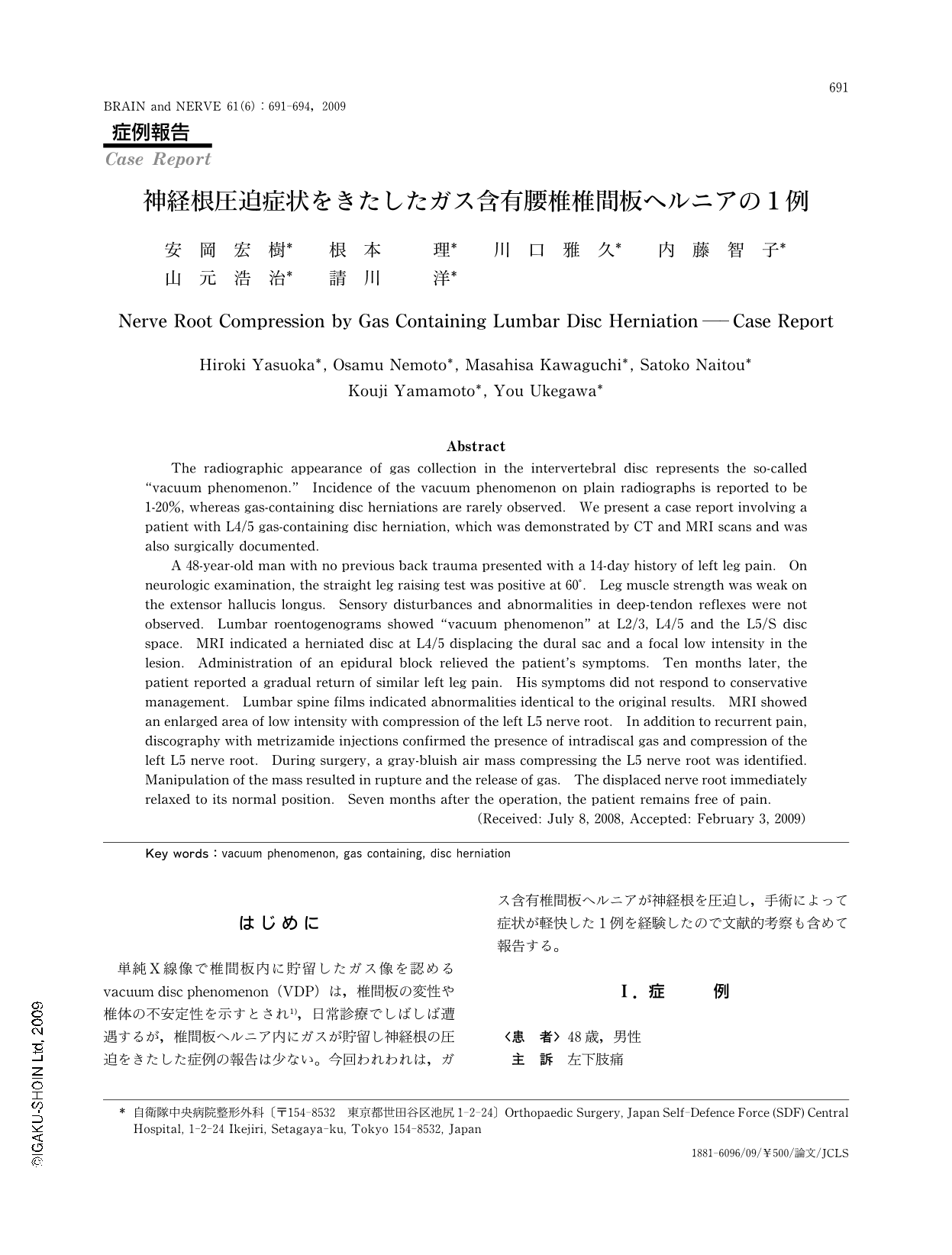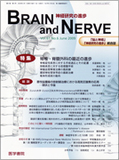Japanese
English
- 有料閲覧
- Abstract 文献概要
- 1ページ目 Look Inside
- 参考文献 Reference
はじめに
単純X線像で椎間板内に貯留したガス像を認めるvacuum disc phenomenon(VDP)は,椎間板の変性や椎体の不安定性を示すとされ1),日常診療でしばしば遭遇するが,椎間板ヘルニア内にガスが貯留し神経根の圧迫をきたした症例の報告は少ない。今回われわれは,ガス含有椎間板ヘルニアが神経根を圧迫し,手術によって症状が軽快した1例を経験したので文献的考察も含めて報告する。
Abstract
The radiographic appearance of gas collection in the intervertebral disc represents the so-called "vacuum phenomenon." Incidence of the vacuum phenomenon on plain radiographs is reported to be 1-20%, whereas gas-containing disc herniations are rarely observed. We present a case report involving a patient with L4/5 gas-containing disc herniation, which was demonstrated by CT and MRI scans and was also surgically documented.
A 48-year-old man with no previous back trauma presented with a 14-day history of left leg pain. On neurologic examination, the straight leg raising test was positive at 60°. Leg muscle strength was weak on the extensor hallucis longus. Sensory disturbances and abnormalities in deep-tendon reflexes were not observed. Lumbar roentogenograms showed "vacuum phenomenon" at L2/3, L4/5 and the L5/S disc space. MRI indicated a herniated disc at L4/5 displacing the dural sac and a focal low intensity in the lesion. Administration of an epidural block relieved the patient's symptoms. Ten months later, the patient reported a gradual return of similar left leg pain. His symptoms did not respond to conservative management. Lumbar spine films indicated abnormalities identical to the original results. MRI showed an enlarged area of low intensity with compression of the left L5 nerve root. In addition to recurrent pain, discography with metrizamide injections confirmed the presence of intradiscal gas and compression of the left L5 nerve root. During surgery, a gray-bluish air mass compressing the L5 nerve root was identified. Manipulation of the mass resulted in rupture and the release of gas. The displaced nerve root immediately relaxed to its normal position. Seven months after the operation, the patient remains free of pain.
(Received: July 8,2008,Accepted: February 3,2009)

Copyright © 2009, Igaku-Shoin Ltd. All rights reserved.


